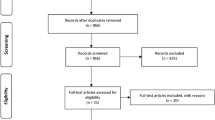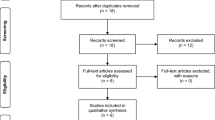Abstract
Emerging evidence suggests the use of less invasive therapy such as pulpotomy in treating permanent teeth with pulp exposure and signs of pulpitis. Hence, this umbrella review aims to evaluate the available systematic reviews on pulpotomy treated permanent teeth. Articles published between January 1970 and May 2021 were searched in ten electronic databases and five textbooks. Only systematic reviews published in English that examined the use of pulpotomy on either carious or traumatic pulpal exposed in mature or immature permanent teeth with signs of pulpitis were selected. The Corrected Covered Areas (CCAs) were calculated to identify the overlap in primary studies, whereas the AMSTAR 2 assessment tool was used to analyze the risk of bias in each included review. Nine systematic reviews were chosen of which two systematic reviews focused solely on coronal pulpotomy, one on partial pulpotomy, and the remaining focused on both coronal and partial pulpotomies. Overall, only two reviews were rated as ‘High Quality’. Umbrella analyses showed that both coronal and partial pulpotomies revealed overall high success rates ranging from 88.5% to 90.6%. However, the currently available evidence on the effects of different pulpal medicaments and restorative materials on the success rate of pulpotomy were still inconclusive. Pulpotomy can be regarded as a promising modality in treating mature and immature permanent teeth with carious pulpal exposure or signs of pulpitis. Nonetheless, further high-quality clinical trials with long-term follow-up and better control of confounding factors are warranted in the future.



Similar content being viewed by others
References
Cushley S, Duncan HF, Lappin MJ, Tomson PL, Lundy FT, Cooper P, et al. Pulpotomy for mature carious teeth with symptoms of irreversible pulpitis: a systematic review. J Dent. 2019;88: 103158. https://doi.org/10.1016/j.jdent.2019.06.005.
European Society of Endodontology. Quality guidelines for endodontic treatment: consensus report of the European Society of endodontology. Int Endod J. 2006;39(12):921–30. https://doi.org/10.1111/j.1365-2591.2006.01180.x.
Solomon RV, Faizuddin U, Karunakar P, Deepthi Sarvani G, Sree SS. Coronal pulpotomy technique analysis as an alternative to pulpectomy for preserving the tooth vitality, in the context of tissue regeneration: a correlated clinical study across 4 adult permanent molars. Case Rep Dent. 2015;2015: 916060. https://doi.org/10.1155/2015/916060.
Lin GSS, Hisham ARB, Cher CIY, Cheah KK, Ghani N, Noorani TY. Success rates of coronal and partial pulpotomies in mature permanent molars: a systematic review and single-arm meta-analysis. Quintessence Int. 2021;52(1):196–208. https://doi.org/10.3290/j.qi.b912685.
Soni HK. Biodentine pulpotomy in mature permanent molar: a case report. J Clin Diagn Res. 2016;10(7):9–11. https://doi.org/10.7860/JCDR/2016/19420.8198.
Namour M, Theys S. Pulp revascularization of immature permanent teeth: a review of the literature and a proposal of a new clinical protocol. ScientificWorldJournal. 2014;2014: 737503. https://doi.org/10.1155/2014/737503.
Lin GSS, Nik Abdul Ghani NR, Mokhtar K, Halim MS. Endodontic management of a mature mandibular first permanent molar that survived for 20 years after complete pulpotomy: a case report. Arch Orofac Sci. 2019;14(2):169–75. https://doi.org/10.21315/aos2019.14.2.372.
Kang CM, Sun Y, Song JS, Pang NS, Roh BD, Lee CY, et al. A randomized controlled trial of various MTA materials for partial pulpotomy in permanent teeth. J Dent. 2017;60:8–13. https://doi.org/10.1016/j.jdent.2016.07.015.
Asgary S, Eghbal MJ, Fazlyab M, Baghban AA, Ghoddusi J. Five-year results of vital pulp therapy in permanent molars with irreversible pulpitis: a non-inferiority multicenter randomized clinical trial. Clin Oral Investig. 2015;19(2):335–41. https://doi.org/10.1007/s00784-014-1244-z.
Alqaderi H, Lee CT, Borzangy S, Pagonis TC. Coronal pulpotomy for cariously exposed permanent posterior teeth with closed apices: a systematic review and meta-analysis. J Dent. 2016;44:1–7. https://doi.org/10.1016/j.jdent.2015.12.005.
Aromataris E, Fernandez R, Godfrey CM, Holly C, Khalil H, Tungpunkom P. Summarizing systematic reviews: methodological development, conduct and reporting of an umbrella review approach. Int J Evid Based Healthc. 2015;13(3):132–40. https://doi.org/10.1097/XEB.0000000000000055.
Page MJ, McKenzie JE, Bossuyt PM, Boutron I, Hoffmann TC, Mulrow CD, et al. The PRISMA 2020 statement: an updated guideline for reporting systematic reviews. BMJ. 2021;372: n71. https://doi.org/10.1136/bmj.n71.
Cameron AC, Widmer RP. Handbook of pediatric dentistry. Philadelphia: Elsevier Health Sciences; 2008.
Duggal M, Cameron A, Toumba J. Paediatric dentistry at a glance. Hoboken: Wiley; 2012.
Koch G, Poulsen S. Pediatric dentistry: a clinical approach. Hoboken: Wiley; 2009.
Srivastava VK. Modern pediatric dentistry. New Delhi: Jaypee Brothers Medical Publishers Pvt. Limited; 2011.
Welbury R, Duggal MS, Hosey MT. Paediatric Dentistry. Oxford: Oxford University Press; 2018.
Pieper D, Antoine SL, Mathes T, Neugebauer EA, Eikermann M. Systematic review finds overlapping reviews were not mentioned in every other overview. J Clin Epidemiol. 2014;67(4):368–75. https://doi.org/10.1016/j.jclinepi.2013.11.007.
Shea BJ, Reeves BC, Wells G, Thuku M, Hamel C, Moran J, et al. AMSTAR 2: a critical appraisal tool for systematic reviews that include randomised or non-randomised studies of healthcare interventions, or both. BMJ. 2017;358: j4008. https://doi.org/10.1136/bmj.j4008.
Guyatt GH, Oxman AD, Vist GE, Kunz R, Falck-Ytter Y, Alonso-Coello P, et al. GRADE: an emerging consensus on rating quality of evidence and strength of recommendations. BMJ. 2008;336(7650):924–6. https://doi.org/10.1136/bmj.39489.470347.AD.
Muhammad SZ, Ahmed A, Shahid I, Khalid A, Menezes RG, Sheikh MU, et al. Chest computed tomography findings in hospitalized COVID-19 patients: a systematic review and meta-analysis. Infez Med. 2020;28(3):295–301.
Zafar K, Nazeer MR, Ghafoor R, Khan FR. Success of pulpotomy in mature permanent teeth with irreversible pulpitis: a systematic review. J Conserv Dent. 2020;23(2):121–5. https://doi.org/10.4103/JCD.JCD_179_19.
Chen Y, Chen X, Zhang Y, Zhou F, Deng J, Zou J, et al. Materials for pulpotomy in immature permanent teeth: a systematic review and meta-analysis. BMC Oral Health. 2019;19(1):227. https://doi.org/10.1186/s12903-019-0917-z.
Li Y, Sui B, Dahl C, Bergeron B, Shipman P, Niu L, et al. Pulpotomy for carious pulp exposures in permanent teeth: a systematic review and meta-analysis. J Dent. 2019;84:1–8. https://doi.org/10.1016/j.jdent.2019.03.010.
Taylor GD, Vernazza CR, Abdulmohsen B. Success of endodontic management of compromised first permanent molars in children: a systematic review. Int J Paediatr Dent. 2020;30(3):370–80. https://doi.org/10.1111/ipd.12599.
Elmsmari F, Ruiz XF, Miro Q, Feijoo-Pato N, Duran-Sindreu F, Olivieri JG. Outcome of partial pulpotomy in cariously exposed posterior permanent teeth: a systematic review and meta-analysis. J Endod. 2019;45(11):1296-306 e3. https://doi.org/10.1016/j.joen.2019.07.005.
Aguilar P, Linsuwanont P. Vital pulp therapy in vital permanent teeth with cariously exposed pulp: a systematic review. J Endod. 2011;37(5):581–7. https://doi.org/10.1016/j.joen.2010.12.004.
Ward J. Vital pulp therapy in cariously exposed permanent teeth and its limitations. Aust Endod J. 2002;28(1):29–37. https://doi.org/10.1111/j.1747-4477.2002.tb00364.x.
Asgary S, Nourzadeh M, Eghbal MJ. Miniature pulpotomy of symptomatic mature permanent teeth: a report of two cases. Iran Endod J. 2016;11(1):75–8. https://doi.org/10.7508/iej.2016.01.015.
Hennessy EA, Johnson BT. Examining overlap of included studies in meta-reviews: guidance for using the corrected covered area index. Res Synth Methods. 2020;11(1):134–45. https://doi.org/10.1002/jrsm.1390.
Arditi C, Burnand B, Peytremann-Bridevaux I. Adding non-randomised studies to a Cochrane review brings complementary information for healthcare stakeholders: an augmented systematic review and meta-analysis. BMC Health Serv Res. 2016;16(1):598. https://doi.org/10.1186/s12913-016-1816-5.
Peinemann F, Tushabe DA, Kleijnen J. Using multiple types of studies in systematic reviews of health care interventions—a systematic review. PLoS ONE. 2013;8(12): e85035. https://doi.org/10.1371/journal.pone.0085035.
Faggion CM Jr, Atieh M, Zanicotti DG. Reporting of sources of funding in systematic reviews in periodontology and implant dentistry. Br Dent J. 2014;216(3):109–12. https://doi.org/10.1038/sj.bdj.2014.47.
Drucker AM, Fleming P, Chan AW. Research techniques made simple: assessing risk of bias in systematic reviews. J Invest Dermatol. 2016;136(11):e109–14. https://doi.org/10.1016/j.jid.2016.08.021.
Higgins J, Thompson S, Deeks J, Altman D. Statistical heterogeneity in systematic reviews of clinical trials: a critical appraisal of guidelines and practice. J Health Serv Res Policy. 2002;7(1):51–61. https://doi.org/10.1258/1355819021927674.
Gentles SJ, Stacey D, Bennett C, Alshurafa M, Walter SD. Factors explaining the heterogeneity of effects of patient decision aids on knowledge of outcome probabilities: a systematic review sub-analysis. Syst Rev. 2013;2:95. https://doi.org/10.1186/2046-4053-2-95.
Seifo N, Cassie H, Radford JR, Innes NPT. Silver diamine fluoride for managing carious lesions: an umbrella review. BMC Oral Health. 2019;19(1):145. https://doi.org/10.1186/s12903-019-0830-5.
Ayorinde AA, Williams I, Mannion R, Song F, Skrybant M, Lilford RJ, et al. Assessment of publication bias and outcome reporting bias in systematic reviews of health services and delivery research: a meta-epidemiological study. PLoS ONE. 2020;15(1): e0227580. https://doi.org/10.1371/journal.pone.0227580.
Stewart L, Moher D, Shekelle P. Why prospective registration of systematic reviews makes sense. Syst Rev. 2012;1:7. https://doi.org/10.1186/2046-4053-1-7.
Egger M, Zellweger-Zähner T, Schneider M, Junker C, Lengeler C, Antes G. Language bias in randomised controlled trials published in English and German. Lancet. 1997;350(9074):326–9. https://doi.org/10.1016/s0140-6736(97)02419-7.
American Academy of Pediatric Dentistry. Guideline on pulp therapy for primary and immature permanent teeth. Pediatr Dent. 2016;38(6):280–8.
Funding
The present study was self-funded by all authors.
Author information
Authors and Affiliations
Contributions
All authors contributed to the study conception and design. Material preparation, data collection and analysis were performed by Galvin Sim Siang Lin, Yun Qing Yew, Hern Yue Lee, Ting Ting Low, Manushantini Pillai Muralitharan Pillai, and Thittikkon Suvanpratum Laer. The first draft of the manuscript was written by Galvin Sim Siang Lin and all authors commented on previous versions of the manuscript. All authors read and approved the final manuscript.
Corresponding author
Ethics declarations
Conflict of interest
The authors declare they do not have any conflict of interest.
Ethical approval
The present review used secondary data which does not require ethical approval from the institution.
Additional information
Publisher's Note
Springer Nature remains neutral with regard to jurisdictional claims in published maps and institutional affiliations.
Rights and permissions
About this article
Cite this article
Lin, G.S.S., Yew, Y.Q., Lee, H.Y. et al. Is pulpotomy a promising modality in treating permanent teeth? An umbrella review. Odontology 110, 393–409 (2022). https://doi.org/10.1007/s10266-021-00661-w
Received:
Accepted:
Published:
Issue Date:
DOI: https://doi.org/10.1007/s10266-021-00661-w




